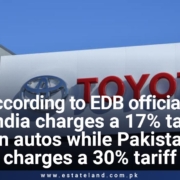Rupee falls by Rs1.2 versus the dollar, reaching a nine-month low
The rupee continued to lose ground against the US dollar in the interbank market, falling by Rs1.2 to conclude the day’s trade at Rs163.67 per USD. The rupee hasn’t been this low against the dollar since Oct 13, 2020, when trading at Rs163.87.
The home unit had closed at Rs162.43 per dollar in the previous session.
After 11 months of surplus, the current account deficit and rising oil costs are putting pressure on the currency, exacerbated by the recent fall. Market considerations such as demand and supply also had a role in the exchange rate’s determination.
Due to importer pressure and solid economic recovery, demand for dollars remains strong, driving the domestic currency lower. However, a few countervailing factors provide some buffer, such as Pakistan’s foreign exchange reserves, which are still quite strong, totaling roughly $25 billion as of July 23, according to Asad Rizvi, the former Chase Manhattan Bank national treasurer.
He predicted that the volume of remittances would likely increase in the months ahead due to the fourth wave of Covid-19 and that compliance with FATF anti-money laundering standards would also play a role in rupee stability.
Furthermore, oil prices on the international market are expected to fall in the coming weeks, allowing the local currency to recover some of its lost ground, he noted.
In today’s session, the rupee showed modest volatility, trading in a range of Rs1.60 rupees per dollar, with an intraday high of Rs163.90 and a low of Rs162.45.
The PKR was trading at Rs163.20/164.20 per dollar on the open market.
The local unit has depreciated by 3.74%, or Rs6.12, against the US dollar so far this fiscal year. Similarly, the rupee has dropped by 2.34%, or Rs3.83, in CY21, with a month-to-date loss of 1.43 %, while the rupee fell 88 paisa against the pound sterling, closing at Rs227.89 per GBP, down from Rs227.01 per pound at the previous session’s conclusion.
Similarly, the PKR lost Rs1.3 in value against the euro, closing at Rs194.57 in the interbank today.
At the closing of the day, the overnight repo rate in the money market was 7.15/7.30%, while the one-week rate was 7.10/7.15%.
Read more: Under KPP the government intends to provide Rs1.6 trillion in loans








